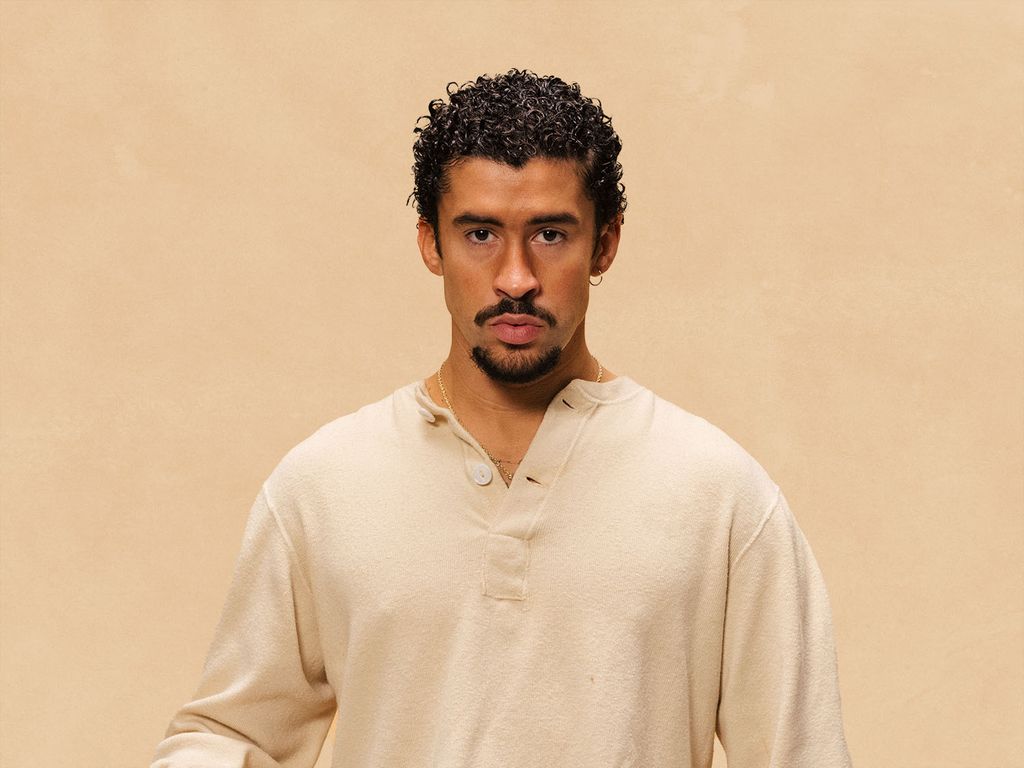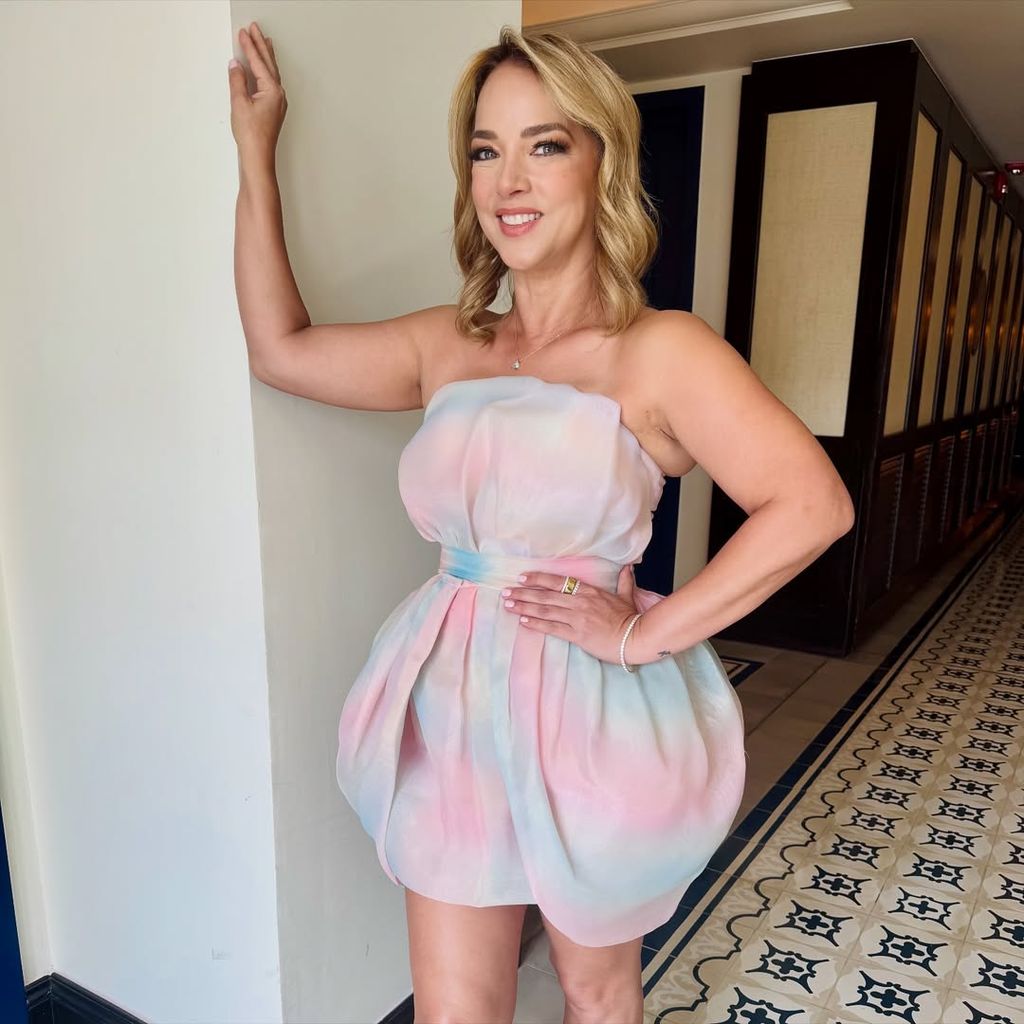Entertainment
The Killers’ Return to Las Vegas
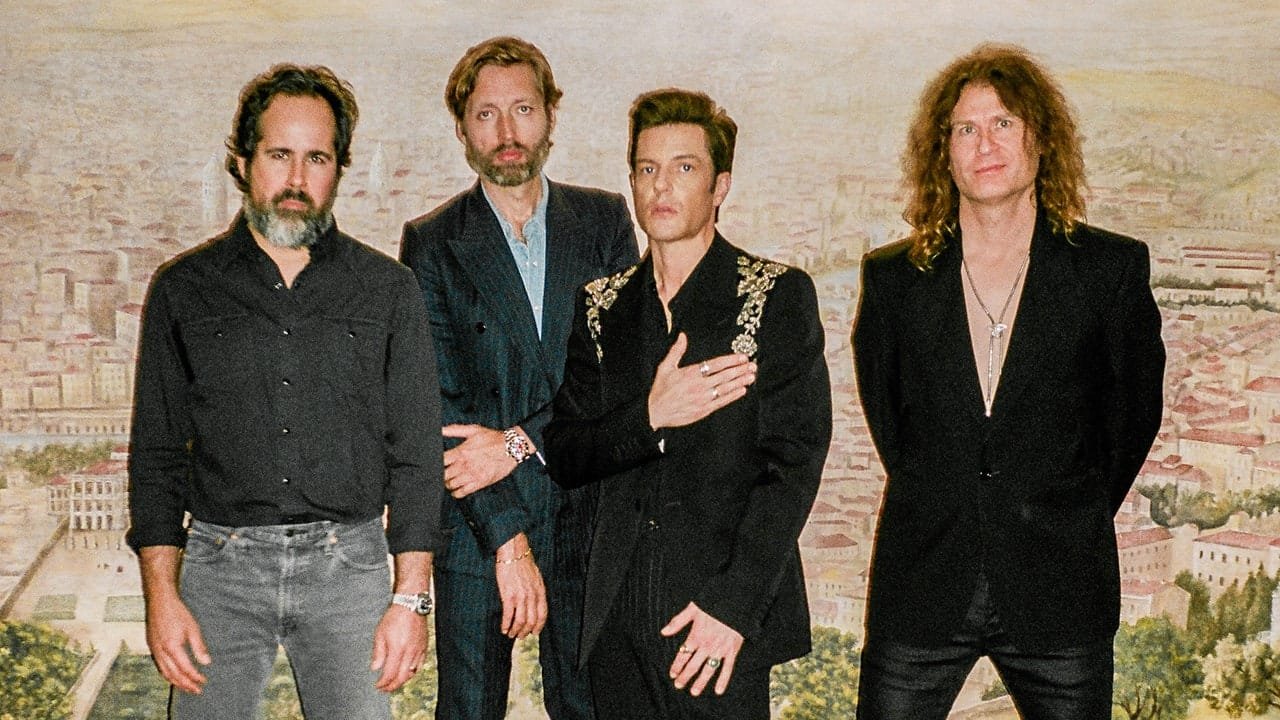
A tense and anticipatory silence engulfed the Colosseum at Caesars Palace. It didn’t last long, but an entire universe of waiting seemed to unfold in mere seconds. Then a series of brightly familiar guitar notes twirled up from the stage and hung suspended in the arena like a set of Christmas lights. The lead singer of the Killers, Brandon Flowers, stepped into the light at the front of the stage, wearing a maroon suit and confidently smirking. The drums rushed in, and Flowers began singing, though—from my vantage point, in the middle of the sold-out venue—he was hardly singing at all. The roles had been reversed. The audience was the lead singer now and Flowers more of a conductor of their energy, absorbing the sounds of the band’s most famous song, “Mr. Brightside,” as it was belted by thousands of fans. When the chorus hit, Flowers put his leg up on a monitor and let his mike fall to his side. The floor shook with the force of people shouting joyfully along with the words.
The concert was taking place in the middle of the Killers’ two-week Las Vegas residency marking the twentieth anniversary of the band’s hit début album “Hot Fuss.” It arrived, in the summer of 2004, in the midst of a very specific early-two-thousands rock-music revival and positioned the Killers alongside bands such as Franz Ferdinand, the Bravery, and even the Strokes—all young groups who were fuelling what many considered a resurgence of the genre. For the Killers, this meant songs drenched in New Wave influence, with slick production and pulsating choruses. It is safe to say that there are few début singles as mammoth and well constructed as “Mr. Brightside,” with its infectious chorus, appealingly repetitive verses, and Flowers’s echoey vocals. The Killers have spent the past twenty years not living up to the track’s dominance so much as learning to embrace it. “Mr. Brightside” is ubiquitous in grocery stores and on TikTok. It has been hailed as the defining song of the millennial generation and as one of the greatest songs of the century. While shopping for a birthday card last month, I opened one that blared a version of the familiar tune. The show in Vegas was attended by a wide age range of fans—yes, the middle-aged folks who escaped to Vegas for a night out reliving decades past (i.e., me), but also people who were barely born when “Hot Fuss” came out.
The residency at Caesars Palace served as a homecoming, of sorts. The Killers are a Vegas band made up of Vegas guys; three of the four members were either born or grew up there. Their association with the city led to tender moments onstage, including Flowers reminiscing about his days working as a busboy in the very same casino and talking about how Vegas’s aura of inhibition can sometimes pay off in practical ways: the band first formed after Flowers responded to an ad that Dave Keuning, the group’s guitarist, placed in a local paper. There was a warmth and intimacy to the Killers’ residency that we don’t typically associate with a Big Rock and Roll Show.
On a Sunday night in August, a few days before the start of the residency, the band members were backstage in their dressing rooms at the Colosseum. When “Hot Fuss” was released, Flowers was in his early twenties, and looked the part of a young heartthrob rock star, with a boyish grin and a faint cloud of mischief often hovering above him. He was notorious for giving unfiltered interviews and for initiating verbal sparring matches with other bands. Now he is a married father of three, though still with an impressive swoop of brown hair atop his head. He talks in slow, thoughtful sentences, in a speaking voice that doesn’t entirely match the bombastic performativity of his singing.
Flowers was born in Vegas but moved, at the age of eight, to Utah. His father worked at a grocery store, his mother at a fast-food restaurant. In 1997, when he was sixteen, he persuaded his family to let him return to Vegas and live with his aunt. The working-class nature of Las Vegas, paired with the kind of work available in Vegas, means that local artists often work in the places that they might also dream of playing in. Flowers waited tables at Spago, the restaurant at Caesars Palace. He recalled, “I would take my tips, wherever I was working, to the Virgin Megastore. I still remember I bought the Strokes’ first EP, which was an import, and it just made me so jealous.”
While Flowers was working in the casinos, Keuning, a transplant from Iowa, was working in a closet, making a demo. “The neighbors had banged on the door a couple of times already, so I didn’t want to bother them,” Keuning told me backstage with a laugh, pushing long, curly hair out of his eyes. Keuning is the only member of the band who hadn’t spent a significant portion of his childhood in Vegas. He’d moved there after college, because it “seemed easier” than moving to L.A. What emerged from the closet was a bare-bones demo of “Mr. Brightside” devised through a kind of idle improvisation. “I had this cool-sounding note, I kind of stumbled onto it, and I needed to go somewhere with it. So then I just moved one finger down and then moved one finger down to this note,” he told me, gesturing with his fingers. “And that was the first three notes of it.” He placed an ad in the paper looking for bandmates, having found little success in the organic search for like-minded music-makers at shows and clubs around town. Flowers, who had never been in a band before, wrote the song’s lyrics. Flowers said, “ ‘Brightside’ having no second-verse change is simply because I didn’t have one. It’s great that it works, but I was not spoiled with other ideas at that point.”
Flowers and Keuning found a local drummer and bassist to fill out their band and played small venues, where they caught the attention of their future group members Mark Stoermer and Ronnie Vannucci. Stoermer, who was at the time bouncing around as a guitarist for a series of Vegas bands, eventually joined on bass. “There were a lot of bands, but there was nothing like what Dave and Brandon were doing,” he recalled. “I could tell they had something, the two of them.” Vannucci, another area musician with deep Vegas roots (his mother, he told me, worked at Caesars Palace when he was growing up), allegedly went up to the group at another show and told them, “You guys would be great if you had a better drummer.” He recalled, of the band’s sound, “I was, like, Man, what is that? It sounds like Suicide or early Cure or something like that. And I was just, like, Nobody’s doing this.”
The sense that nobody was doing this actually haunted the Killers in Vegas a bit, once the four core members began writing and performing songs. The sonic stylings that were popular in Vegas at that point were metal, rap-rock, some pop-punk. The Killers, with their large neon choruses and New Wave-revival aesthetics, were on the outside looking in at their home city’s music scene. Though they loved Vegas, Flowers told me that from early on they were “looking beyond it.” The band practiced in Vannucci’s garage and snuck into the band room at the University of Nevada, Las Vegas, to record songs. They played frequently at Sasha’s, a club that catered to the city’s trans community, and put demo tracks on a Web site dedicated to unsigned Vegas bands. Braden Merrick, an A. & R. rep for Warner Bros., heard their stuff and flew them to Berkeley, California, to record new demos to send out to labels. Many labels passed, but eventually the band caught the attention of a U.K.-based outfit called Lizard King, and then Island Records in the U.S.
The Killers recorded “Hot Fuss” in the course of a year, between 2003 and 2004, during which time Flowers heard the Strokes album “Is This It” and scrapped everything that had been recorded up to that point—except “Mr. Brightside.” The band members were all working retail or casino jobs during the making of the record. Vannucci recalls sitting on a curb in front of his house with Stoermer, who was working as a courier at Quest Diagnostics, and telling him, “You want to do music, right? You don’t want to be a runner for a lab company. Fucking do music, because this is happening. We’re going to do it.” The album was released on June 7, 2004, and was slow to reach the mainstream. The band toured the world before rooms of ten people, and then twenty people, and then fifty, and then hundreds, and then thousands. They grew a grassroots audience simply by never leaving the road. Stoermer told me that, from 2003 to 2005, the band was touring around three hundred days a year.
[ad_2]
Source link
Discover more from The Mass Trust
Subscribe to get the latest posts sent to your email.
Celebs News
Yahoo Cookies: Understanding Usage and Privacy Settings
When it comes to navigating the digital landscape, understanding Yahoo cookies is essential for enhancing your experience across their platforms.These cookies play a critical role in personalizing your interaction with Yahoo’s multitude of services, from browsing news articles to accessing emails.
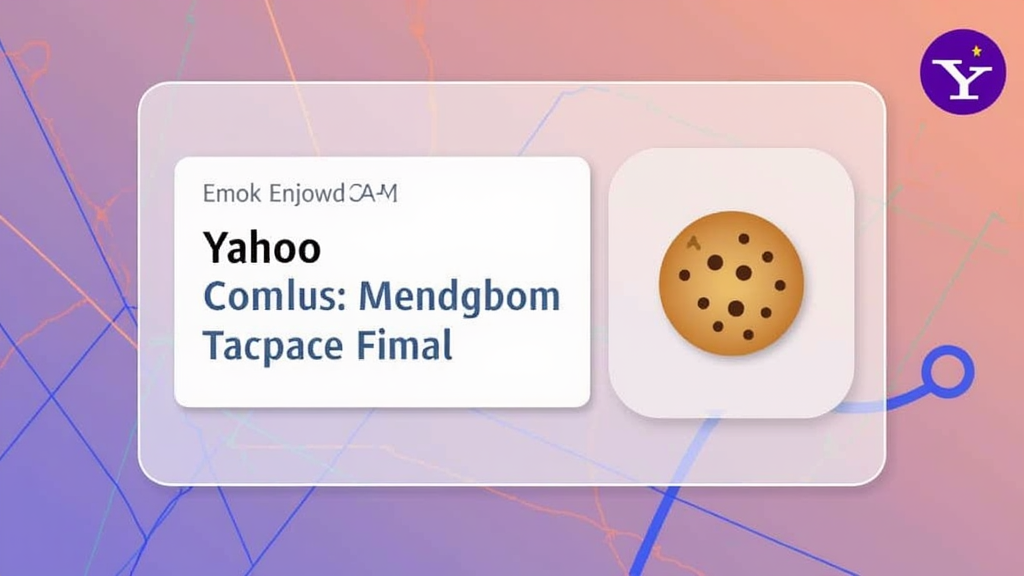
When it comes to navigating the digital landscape, understanding Yahoo cookies is essential for enhancing your experience across their platforms. These cookies play a critical role in personalizing your interaction with Yahoo’s multitude of services, from browsing news articles to accessing emails. By utilizing Yahoo cookies, the company can gather insights about user preferences and behavior, which ultimately helps in tailoring content and advertisements to suit individual interests. However, it’s important to stay informed about Yahoo privacy settings, allowing you to manage data collection by Yahoo and ensure your user consent on Yahoo aligns with your preferences. Familiarizing yourself with the Yahoo cookie policy empowers you to make informed choices regarding your data and online privacy.
Navigating the online world often involves various tools and technologies, and cookies are a prime example of how companies gather user data. These small text files, used by platforms like Yahoo, help streamline user experiences by saving information that enhances engagement. Whether it’s for authentication, security, or personalized advertising, understanding how cookies function can significantly impact how users interact with digital content. Similarly, privacy settings offered by Yahoo provide an essential avenue for managing how personal information is utilized, ensuring that consent is obtained before any data collection occurs. When engaging with Yahoo’s services, being aware of these processes can lead to a safer and more customized online journey.
Understanding Yahoo Cookies and Their Usage
Yahoo employs various types of cookies when you engage with their platforms, which include popular sites like Yahoo, AOL, and Engadget. These cookies are integral for delivering tailored content and functionalities, ensuring a seamless user experience. By utilizing cookies, Yahoo can effectively authenticate users, enhance security protocols, and deter spam and abuse, thereby improving the overall quality of service. Users will often see prompts related to these cookies, especially when accessing new features across Yahoo’s network.
Additionally, cookies help track user activity and usage patterns on Yahoo’s websites and apps. For instance, Yahoo collects data on the total number of visitors, the types of devices being used, and the duration of each visit. This information, collected in aggregate form, enables Yahoo to refine its services and offer personalized content, thus ensuring a more engaging experience for its users. Ensuring transparency, Yahoo advises users to review their Cookie Policy for a better understanding of what data is collected and how it is utilized.
Yahoo Privacy Settings: Managing Your Cookie Preferences
Managing privacy settings on Yahoo is straightforward and empowers users to customize their cookie preferences. When users engage with Yahoo apps or websites, they are presented with options to ‘Accept All’ or ‘Reject All’ cookies. This choice is crucial as it determines how Yahoo and its partners access personal data for advertising and analytics. Users opting to ‘Reject All’ will limit the data collection process to essential functions, thereby enhancing their privacy while using the service.
For those who want a tailored experience without compromising too much on privacy, Yahoo provides an easy pathway to adjust settings through the ‘Manage Privacy Settings’ option. Here, users can meticulously select which types of cookies they consent to, ensuring their data is handled according to their preferences. This transparency not only showcases Yahoo’s commitment to user consent but also encourages users to be proactive in managing their data collection by Yahoo and its partners.
The Role of User Consent in Yahoo’s Data Collection
The concept of user consent plays a pivotal role in how Yahoo collects and utilizes data. Upon visiting Yahoo’s network, users are prompted to make a clear choice regarding their cookie preferences. This ensures that individuals are informed about how their data will be used – whether for analytics, personalized advertising, or content measurement. Yahoo partners with an extensive network of collaborators, guided by frameworks like the IAB Transparency and Consent Framework, to uphold these practices.
Failure to provide valid consent potentially limits Yahoo’s ability to offer personalized experiences, impacting the quality of services delivered. Thus, users are encouraged to fully understand the implications of their choices, ensuring they maximize their benefits while actively participating in their own privacy management. Yahoo’s clear communication around user consent strengthens trust and fosters a more secure environment for its user base.
Exploring Yahoo’s Cookie Policy: What You Need to Know
Yahoo’s Cookie Policy is crucial for users wishing to understand the finer points of data collection and management. The policy outlines how Yahoo uses cookies, including the types of cookies involved and their respective purposes. For instance, some cookies facilitate user login and authentication, while others focus on improving user experience by measuring site interactions and feedback.
This policy serves not only as a guide for users but also as part of Yahoo’s commitment to transparency. Users are encouraged to read the cookie policy to comprehend what data is collected and why, ultimately allowing them to make informed decisions about their privacy on Yahoo’s platforms. Such awareness can empower users to navigate digital interactions confidently, understanding their rights and the options available to manage cookie usage.
Cookies on Yahoo: Types and Their Functions
There are multiple types of cookies utilized by Yahoo, each serving distinct functions crucial for the operation of its websites and applications. Essential cookies are necessary for core functionalities, such as safe login and page navigation. Then there are performance cookies that track user interactions, providing insights on content popularity and assisting Yahoo in optimizing site performance.
Lastly, advertising cookies are significant for marketers aiming to deliver targeted advertisements based on user behavior and preferences. By employing these varied cookies, Yahoo seeks to create a more personalized browsing experience while ensuring that users retain control over their privacy settings. Users can explore specific cookie functions in the Cookie Policy for more detailed insights.
Navigating Privacy and Data Security on Yahoo
Data security and user privacy are paramount considerations for Yahoo’s operations. By implementing stringent security measures and offering robust privacy options, Yahoo aims to protect user information from unauthorized access and misuse. The commitment to data security is not only about compliance with regulations but also about building trust with users who rely on Yahoo for their daily digital needs.
In order for users to feel secure, Yahoo provides various tools to manage their privacy preferences, including the option to withdraw consent whenever necessary. This user-centric approach towards privacy and security reinforces Yahoo’s ethos of transparency, allowing users to feel confident about their data handling practices. By navigating through privacy settings, users can tailor their experience, reaffirming their data protection choices.
Yahoo’s Approach to Aggregate Data Collection
Yahoo strategically collects aggregate data to enhance its services while ensuring individual user identities remain anonymous. This method provides valuable insights into user behavior, allowing Yahoo to refine content delivery and improve overall service quality without compromising individual privacy. This form of data collection focuses on trends and patterns rather than direct associations with personal information.
The use of aggregate data helps Yahoo maintain a balance between harnessing valuable information for service enhancement while prioritizing user confidentiality. Moreover, this approach is particularly appealing to users, as it demonstrates a commitment to maintaining privacy while still leveraging data for continuous service improvement. Understanding this process is essential for users who wish to remain informed about how their interactions contribute to the overall Yahoo experience.
Analyzing the Impact of Cookies on User Experience
Cookies significantly influence the user experience across Yahoo’s extensive portfolio of websites and applications. By collecting information regarding preferences and behaviors, cookies allow Yahoo to present relevant content and advertisements, thereby enhancing engagement. Users often benefit from personalized experiences arising from intelligent cookie implementations, which keep track of user interactions and preferences.
As a result, the ability to set user preferences through cookies leads to a more streamlined and enjoyable browsing experience. However, awareness of cookie usage and its implications on privacy is essential for users looking to optimize their digital interactions while feeling secure about their data. The balance between personalization and privacy underscores the importance of user education regarding cookies on Yahoo.
Understanding Cookies and Transparency in Yahoo’s Operations
Transparency regarding cookie usage is a core aspect of Yahoo’s operations. The company believes that users should be fully informed about how their data is collected and used. This principle extends to Yahoo’s cookie policy, which articulates how information is gathered and the nature of the cookies employed in these processes. By providing clear information, Yahoo demonstrates a commitment to transparency, fostering trust with users.
In practical terms, this transparency allows users to make informed decisions about their privacy settings. Whether users choose to accept or reject cookies, the understanding of what these choices entail is crucial for maintaining control over their data. This proactive approach not only helps mitigate concerns about unauthorized data access but also encourages users to engage with Yahoo’s platforms fully.
Frequently Asked Questions
What are Yahoo cookies and how do they work?
Yahoo cookies are small data files used by Yahoo’s websites and apps to enhance user experience. They help in storing user preferences, authenticating users, and measuring website usage. By using cookies, Yahoo can provide customized content and ads based on user interactions.
How does Yahoo protect user privacy with cookies?
Yahoo prioritizes user privacy through its cookie policy. It only collects aggregated data, ensuring that individual user identities remain anonymous. Users can manage their Yahoo privacy settings to control cookie usage and withdraw consent for data collection.
What should I know about Yahoo’s cookie policy?
Yahoo’s cookie policy outlines how cookies are used across its services. It details the purposes of cookies, including site functionality, analytics, and personalized advertising, while providing users with options to manage their cookie preferences and data collection.
How can I adjust my cookie preferences on Yahoo?
To adjust your cookie preferences on Yahoo, click on “Manage Privacy Settings” on the consent banner or visit the “Privacy and Cookie Settings” on the Yahoo website. Here, you can choose to accept, reject, or modify your cookie usage preferences.
Does Yahoo require user consent for cookies?
Yes, Yahoo requires user consent for cookies. When users access Yahoo services, they can click “Accept All” to enable cookies or “Reject All” to limit their use. Users can also manage their consent through privacy settings anytime they want.
What types of information does Yahoo collect through cookies?
Through cookies, Yahoo collects information such as the number of visitors, device type (iOS or Android), browser used, and the duration of visits to its websites and apps. This information is collected in aggregate and is not linked to specific individuals.
What are the implications of rejecting cookies on Yahoo?
Rejecting cookies on Yahoo may limit your ability to access certain features or receive personalized content and advertisements. While you can browse Yahoo services, your experience may be less optimized, as some services rely on cookies for functionality.
How does Yahoo use cookies for advertising purposes?
Yahoo uses cookies in conjunction with user data, such as browsing habits, to tailor advertising content and improve effectiveness. This helps provide users with relevant ads based on their interests and activity across Yahoo’s network.
Can I withdraw my consent for cookies after accepting on Yahoo?
Yes, you can withdraw your consent for cookies at any time on Yahoo. To do this, you can revisit the “Privacy and Cookie Settings” or “Privacy Dashboard” on the Yahoo site to modify your preferences.
Where can I find more information about Yahoo’s data collection practices?
For more information about Yahoo’s data collection practices, you can refer to Yahoo’s Privacy Policy and Cookie Policy. These documents provide detailed insights into how Yahoo manages cookies and user data.
| Key Point | Details |
|---|---|
| Yahoo Brand Family | Includes Yahoo, AOL, Engadget, In The Know, and MAKERS. |
| Use of Cookies | Cookies and similar technologies are used to store and retrieve information on user devices. |
| Purposes of Cookies | 1. Provide services 2. Authenticate users 3. Implement security measures 4. Measure usage stats |
| Data Collection | Aggregated data on visitors, devices, browsers, and duration spent on the site. |
| Consent Options | Users can “Accept All” to allow cookies or “Reject All” to decline them. |
| Privacy Settings Management | Users can change consent settings anytime via “Manage Privacy Settings” or links in apps/websites. |
| Further Information | Detailed information available in the Privacy Policy and Cookie Policy. |
Summary
Yahoo cookies are essential for enhancing user experience across their websites and apps. By utilizing cookies, Yahoo can provide customized services, authenticate user sessions, enhance security measures, and accurately measure site usage. Users are informed of their choices regarding cookie consent through straightforward prompts, allowing them to manage their data preferences effectively. For more details on how Yahoo uses cookies and personal data, refer to their Privacy and Cookie Policies.
Source: https://www.yahoo.com/entertainment/music/articles/behind-justin-bieber-200m-net-175639548.html
| Key Points | Details |
|---|---|
| Yahoo Brand Family | Includes Yahoo, AOL, Engadget, In The Know, and MAKERS. |
| Use of Cookies | Cookies store and retrieve information to enhance user experience. |
| Purpose of Cookies | To provide services, authenticate users, implement security, and measure website usage. |
| Data Collection | Collects number of visitors, device type, browser, and duration; data is aggregated and anonymous. |
| Consent Options | Users can accept all cookies, reject all, or manage settings through Privacy Dashboard. |
| Privacy Policies | Further information available in Privacy Policy and Cookie Policy. |
Summary
Yahoo cookies play a pivotal role in enhancing your experience across all Yahoo platforms. By employing cookies, Yahoo ensures effective functioning of its websites and apps while protecting user privacy. Users have the option to manage their cookie preferences easily, guaranteeing transparency and control over personal data usage. Understanding the significance of Yahoo cookies allows users to enjoy personalized, secure, and streamlined services.
Discover more from The Mass Trust
Subscribe to get the latest posts sent to your email.
Entertainment
The Rise of Taylor Swift: Unpacking the Singer’s Latest Album and Tour
Taylor Swift’s latest album and tour have taken the music world by storm, with the singer-songwriter’s captivating lyrics and genre-bending sound earning her widespread critical acclaim and commercial success. With a career spanning over a decade, Swift has established herself as a force to be reckoned with in the music industry, and her latest endeavors are a testament to her enduring talent and dedication to her craft. From her early country roots to her current pop-rock sound, Swift continues to inspire and captivate audiences around the world with her unique voice and vision.
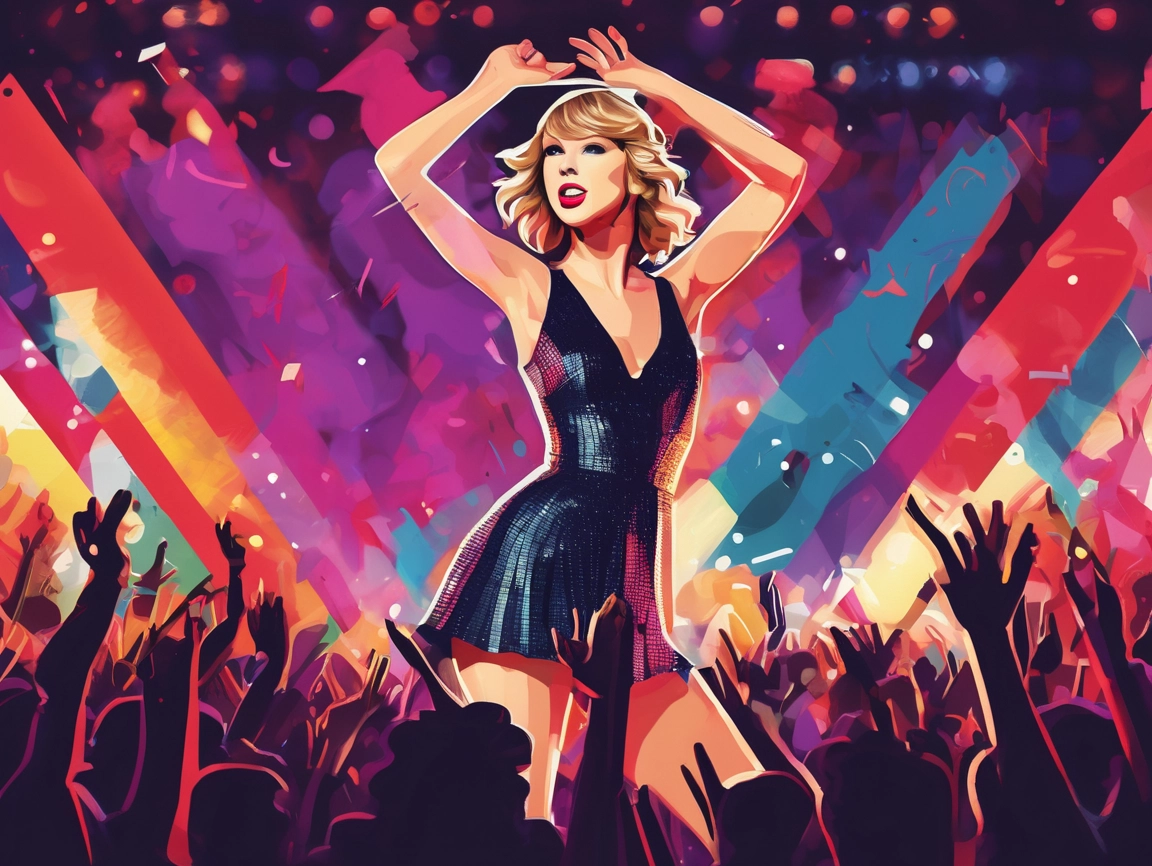

Taylor Swift, the global superstar, has once again taken the music world by storm with her latest album and tour. The singer-songwriter, known for her captivating lyrics and genre-bending sound, has been making headlines with her record-breaking album sales and sold-out concerts. In this article, we’ll delve into the fascinating story behind Swift’s latest musical endeavors and what’s next for the talented artist.__tag_h3A Look Back at Swift’s Illustrious Career
With a career spanning over a decade, Taylor Swift has established herself as a force to be reckoned with in the music industry. From her early country roots to her current pop-rock sound, Swift has continuously pushed the boundaries of her artistry, experimenting with different genres and themes. Her dedication to her craft has earned her numerous awards and accolades, including multiple Grammy Awards, American Music Awards, and Billboard Music Awards.
Swift’s rise to fame began with her debut album in 2006, which introduced her unique voice and style to the world. Her subsequent albums, including __tag_emFearless, __tag_em1989, and __tag_emReputation, solidified her position as a leading lady in the music industry. Each album has been a testament to her growth and evolution as an artist, with __tag_emFolklore and __tag_emEvermore showcasing her storytelling prowess and lyrical depth.__tag_h3The Latest Album: A Masterclass in Musical Storytelling
Swift’s latest album has been hailed as a masterpiece, with critics praising its cohesion, production, and Swift’s signature songwriting. The album’s themes of love, heartbreak, and self-discovery resonate deeply with listeners, who have been eagerly devouring every lyric and melody. With its eclectic blend of genres, from folk to rock to pop, the album is a testament to Swift’s innovative spirit and willingness to take risks.
One of the standout aspects of the album is its conceptual nature, with each song flowing seamlessly into the next to create a cohesive narrative. Swift’s attention to detail and dedication to her craft are evident in every aspect of the album, from the meticulous production to the poignant lyrics. The album’s lead singles have been dominating the airwaves, with __tag_strongfans and critics alike praising the songs’ catchy hooks and memorable melodies.__tag_h3The Tour: A Visual and Musical Spectacle
Swift’s latest tour has been making headlines with its stunning visuals, intricate stage design, and high-energy performances. The tour’s setlist is a carefully curated selection of Swift’s greatest hits, showcasing her impressive discography and versatility as a performer. From the opening notes of the first song to the final encore, Swift commands the stage with her charisma and talent, leaving audiences in awe.
The tour’s production values are equally impressive, with cutting-edge lighting, pyrotechnics, and visual effects creating an immersive experience for concertgoers. Swift’s commitment to her fans is evident in every aspect of the tour, from the meticulously designed merchandise to the heartfelt interactions with the audience. With the tour already breaking records and selling out venues worldwide, it’s clear that Swift’s star power shows no signs of fading.
__tag_h3What’s Next for Taylor Swift?As Swift continues to dominate the music industry, fans are eagerly anticipating her next move. With rumors of new music and collaborations circulating, it’s exciting to think about what the future holds for this talented artist. One thing is certain, however: Taylor Swift will continue to push the boundaries of her artistry, inspiring and captivating audiences around the world with her unique voice and vision.
In conclusion, Taylor Swift’s latest album and tour are a testament to her enduring talent, dedication, and passion for music. As a true icon in the entertainment industry, Swift continues to break records, push boundaries, and inspire generations of fans. Whether you’re a longtime Swiftie or just discovering her music, there’s no denying the impact and influence of this global superstar.
Discover more from The Mass Trust
Subscribe to get the latest posts sent to your email.
Entertainment
Formative years Awards 2025: We let you know how and when to peer the twenty second version of the supply

The time got here! This Thursday, September 25, Panama clothes up To be the paradisiacal degree of Formative years Awards, with a rite wherein it acknowledges the most efficient of Latin track, tv and leisure. In its twenty second version, the rite might be ancient as a result of it’s the first time that the supply leaves the US, which provides much more emotion to the good evening on the Figali Conference Middle of the town of Panama.
Clarissa Molina, Nadia Ferreira and Alejandra Espinoza They are going to be the gorgeous host of Awards Formative years 2025, and are able to take us during the evening to satisfy the entire winners. This 12 months, the listing of nominees contemplates 231 artists in 41 classes, headed by means of Dangerous Bunny and Danny Oceanwho can take six awards house. Anitta, Beéle, Carín León, Emilia, Myke Towers, Neton Vega and Weight Weight They’re carefully adopted by means of 5 nominations each and every.
The evening, as well as, may have are living shows from TOLemán, Alleh & Yorghaki, Dangerous Gyal, Boza, Camilo, Camila Fernández, Carlos Vives, DND, inform me Go with the flow, Emilia, Erika Ender, Esau Ortiz, Farruko, Fonseca, Gaitanes, Gloria Trevi, Crew Company, Crew Area of interest, Hamilton, Kevin Aguilar, Lola Indigo, Lola Indigo, Los Rabanes, Louis Bpm, Louis Bpm Maluma, Makaco The mind, Marc Anthony, Mari L. a. Carajita, Morat, Myke Towers, Nando Increase, Elementary Nanpa, Natti Natasha, Omar Alfanno, R! Ch Yashel, Samy & Sandra Sandoval, Sech, Sergio George, Silvestre Dangond, Willie Colón, Xavi, Wisin and Yami Safdie.
All the way through the evening, there can be invited stars that may take the degree to ship an award, together with Adamamari López, Agudelo 888, Andrea Bejar, Alex Fernández, Angélica García, Angélica Rivera, Ariadna Gutiérrez, Brianda Deyanara, Carlos Arenas, Daniel Elbitar, Daniel Nohra, De l. a. Ghetto, Diego Klein, Eduin Caz, Eddy Lover, the great, the dangerous and the unsightly, Barak workforce, Jek Gil, Kenia Os, Kunno, L. a. Cruz, Luis Figueroa, Luciana Sismandi, Luz Gaggi, Majo Aguilar, Marc Crosas, María José, Maye, Migbelis Castellanos, Paloma Morphy, Patty Castillo, Patty Delgado, Renata Flores, Sofía Castro, Valentina Ferrer, Valeria Marín, Ximena Córdoba and Yeri Mua.
The place and when to peer Formative years Awards 2025?
The twenty second version of Formative years Awards will start with the already well-known Superstar eveningwherein Migbelis Castellanos, Brianda Deyanara, Roberto Hernández, Kunno and Diego Klein They are going to take us for the pink carpet, wherein we can see the ability at the blue carpet parade. As quickly because the display will get started on the level of the 8 PM ET / 7 PM CT.
For any individual to omit the rite, it’ll be transmitted via more than a few media:
- USA
- Streaming (USA and maximum Latin American international locations): VIX
- Panama: Teleter and RPC
World availability:
- Canada – Channel Telalatino
- Costa Rica – Channel 4
- El Salvador – Channel 35
- Guatemala – Channel 7
- Honduras – Channels 5 and three
- Mexico – Channel 5
- Nicaragua – Channel 2
- Paraguay – Channel Latele (11)
- Dominican Republic – Channels 5 and 15
- Venezuela – Channel Venevisión (4)
Thru social networks you’ll additionally pay attention to the awards rite and probably the most memorable moments of the evening, as a result of Alejandra Jaramillo, Beta Mejía, Kunno, Yeri Mua, Sweet Lover, Marelissa and Vicky Van They are going to be the virtual transmission conductors to be had 6:30 PM ET / 5:30 PM CT On Univision Social platforms, together with YouTube, Tiktok, Instagram, Fb, X, Vix and in legitimate adolescence awards accounts.
Supply hyperlink
Discover more from The Mass Trust
Subscribe to get the latest posts sent to your email.

 News2 years ago
News2 years agoAlexander Zverev’s Masterclass: Alcaraz Stunned in Australian Open 2024!

 Product Reviews8 months ago
Product Reviews8 months agoThe Instant Pot Duo 7-in-1 Review: Your Final Kitchen Recreation-Changer for Meal Prep & Time Savings

 Hollywood2 years ago
Hollywood2 years agoGypsy Rose Blanchard’s husband’s name? Ryan Anderson: All you need to know

 News2 years ago
News2 years agoActor Christian Oliver Plane Crash : Latest Updates

 News2 years ago
News2 years agoJames Harden, who is now prospering with the Clippers, thinks his ‘villain persona’ is done.

 Entertainment8 months ago
Entertainment8 months agoDickey Betts Tribute Live performance Evaluate: Setlist, Particular Visitors

 News2 years ago
News2 years agoStarsky And Hutch’ Star David Soul, A Native Of Sioux Falls, Passes Away.”

 Product Reviews8 months ago
Product Reviews8 months agoBest Dual Basket Air Fryer: Ninja DZ201 Foodi 8 Quart 6-in-1 Review



